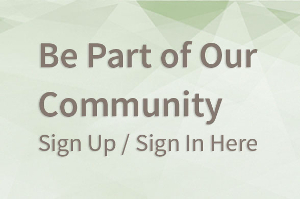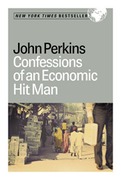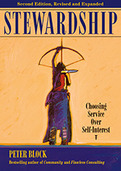BK Blog Post
Five Simple (But Not Easy) Ways to Build Your Community
 Posted by
Jeevan Sivasubramaniam,
Managing Director, Editorial,
Berrett-Koehler Publishers Inc.
Posted by
Jeevan Sivasubramaniam,
Managing Director, Editorial,
Berrett-Koehler Publishers Inc.
Peter Block is a bestselling author, speaker and legend in the organizational development world. His current passion, and the subject of his latest book, is community -- how to create it, nourish it, and sustain it. Real life satisfaction becomes possible only when we join our neighbors to live and create a community that supports our family and makes us useful citizens.
"The consumer society encourages this romantic idea that schools can raise our child, doctors can keep us healthy, institutions and services can care for the vulnerable, police can keep us safe, government will care of the land, and there is out there a global company will move into our city and save our local economy. The reality is that we already possess the ideas, the tools and the support to create a neighborhood that can raise a child, provide security, sustain our health, secure our income, care for our vulnerable people and get us work to do. Each of these is within the power of our community. Each is within walking distance. Here are five simple, though not easy to do steps to satisfaction:
1. Become gift-minded. Find out the gifts of each person in the neighborhood. What do they like to do, what do they know that they would be willing to teach other people? Skills such as training a dog, sewing, gardening, fixing a car or babysitting children can be useful to everyone.
2. Welcome Strangers. There are people nearby that we do not know. We are shut off from them by like-mindedness. Instead of staying in your social core, create a welcoming to those who are not part of the core circle but are still part of the neighborhood. This is not just hospitality because we need these people -- all people -- to make the neighborhood function. We do not have to particularly like them, but we need them to function as a community.
3. Discover Local Association Life. Dozens of formal and informal associations, groups of people who come together by choice to do something they enjoy exist in all neighborhoods and communities. Find out what and where these groups are and join one. If you can't find a particular group, start one. Groups can be for just about anything: a coffee group, a book club, dog walkers gathering, or those interested in the history and preservation of the neighborhood where you all live.
4. Choose to be a Connector. Every neighborhood has people who know just about everyone and like to find out what people love to do and bring them together. Be one of these people. Find a friend and knock on doors up and down the block asking what people like to do and would like to share with others. Meet with other Connectors and talk about building the social fabric of the place. Discuss how to support small local businesses, including the many being operated out of homes. Connecting is not just for adults, however. Find out what the neighborhood children are interested in and give them a function related to that interest. Doing so lets the youth know that they are vital and needed.
5. Finally, See it all as a Social Movement. This is a movement to reclaim into our own hands the capacity to find satisfaction. It is a social movement called localism. It marks the end of the dominance of consumerism and has been underway for decades. The movement remains invisible because it holds no large financial interest and is not in the job descriptions of people we call "leaders." Therefore it is not called news, it is minimized by calling it "human interest," but it is vital and kinetic. All of this is explored both in The Abundant Community and the website; abundantcommunity.com.
Join us in this movement, tell us your story, hear what others are doing that works, find each other. It is a world based on gifts and relatedness. Radical but doable."
Chime in below with your thoughts and responses.






